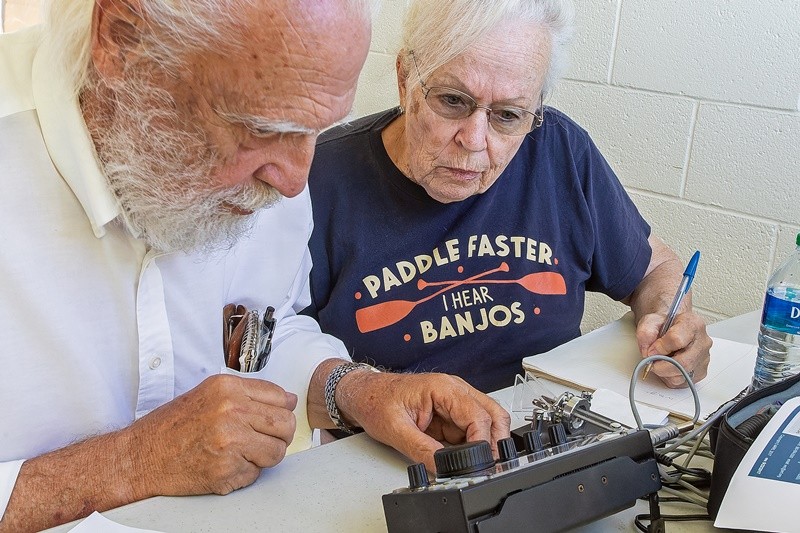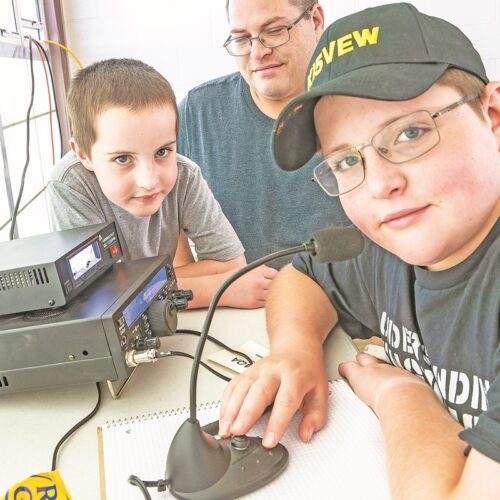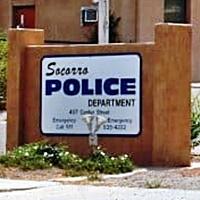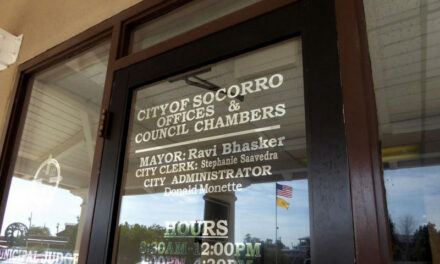
HAM operator Al Braun and his wife, Sandy, work at making contacts across the country.
Russell Huffman | El Defensor Chieftain photos
When high winds took out phone lines and the internet for many residents of Socorro County in May, there was a little-known lifeline to state officials in Santa Fe that carried the news of the need for help with communications infrastructure.
Thanks to Socorro’s Al Braun, the Statewide Emergency Coordinator of the New Mexico Department of Homeland Security and Emergency Management, Wynn Brannin got the news via HAM radio.
“When I called Santa Fe (via an emergency landline), Wynn Brannin told me he had been already made aware of the situation we had through HAM radio,” Socorro County Emergency Manager Gail Tripp said.
Tripp could have made a radio transmission about Socorro County’s plight after receiving her Federal Communications Commission license in April.
“I’m a newly licensed HAM amateur radio. I have a technician class license,” Tripp said.
Tripp got her license following the retirement of the communications coordinator Bear Albrecht, the only county employee with a HAM license.
The international field day for HAM operators was this past weekend, from noon Saturday until Sunday. Locally, the event was celebrated at the San Antonio Community Center, and it was a chance for the public to learn what the radio broadcast system is about.
There are two schools of thought regarding the origin of the term “HAM” radio, with one theory being it was a derogatory label given to amateur radio broadcasters by professionals. Radio interference by amateurs could override radio station signals, leading to FCC regulations. A second theory is the term HAM comes from the first letter of the last names of radio pioneers Heinrich Hertz, Edwin Howard Armstrong, and Guglielmo Marconi.
While the term’s origin may be murky, HAM radio has existed since 1901.
Congress passed the Radio Act of 1912, which required amateurs to be licensed, and it developed a code of conduct that current radio operators work under today.

Matthew Price (right) was busy making HAM contacts Saturday as his brother James and
dad James Price look on.
The biggest change for HAM radio operators is improved technology, where emails can now be sent via radio.
For a HAM operator like Braun, who sent the email to state officials about Socorro’s communications problems, the radio system is a family affair and shared by his wife, Sandy, and the pair detail how a friend made contact with King Hussein of Jordan, another apparent HAM enthusiast.
Making contacts is the backbone of successful shortwave radio transmissions. With the average age of HAM operators being 60 in Socorro County, there is a growing need to bring new blood into the hobby.
That’s why Jim Lommen, president of the (SARA), was happy to see youngsters like Matthew and his brother, James Price IV, who have honestly come by their love of HAM radio via their father, James.
At just 11 years old, Matthew earned a “general” operator’s license after earning a technician’s license last year as a 10-year-old. He’s already bested his father’s licensed age of 13, and if he works hard enough, he might earn the “amateur extra” license.
Matthew appears likely to earn that status as he quickly articulates the number of contacts he had made by Saturday afternoon, including communication with an operator in Illinois. Moving from a radio desktop microphone to a laptop computer at his left, Matthew begins reeling his contacts.
“This chart here shows the number of places I have contacted and their locations,” Matthew said.
The preteen also demonstrates a vast knowledge of state locations and their names which appears to be a positive side effect of HAM radio as younger brother James shows his knowledge of the program and matches his older brother’s knowledge of the program and U.S. states.
“My whole family has been involved in HAM radio, and I had kind of gone dormant until Matthew started showing an interest,” James Price said.
Matthew’s birthday two days before included new radio broadcast equipment that brought about the same excitement as new toys on Christmas day for the youngster.
While HAM radio is a hobby for most, its importance and abilities were certainly shown recently, and the event wasn’t lost on Lommen, who sees the need to keep recruiting interest in the field.
“I think it’s pretty important to keep the technology alive because, I mean, in emergencies, this is the analog transmission. Our field day is a perfect example. Where we can transmit from power provided by generators or batteries, in an emergency situation where a power grid is knocked out — we can still communicate with the rest of the world,” Lommen said.
If you missed the field day, there will be another opportunity for HAM Fest in October. To learn more about SARA, visit them online at socorroara.org or their Facebook page at facebook.com/SocorroARA.





















